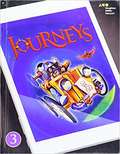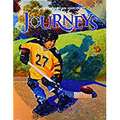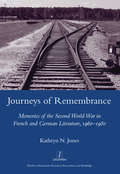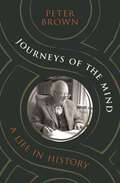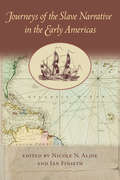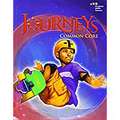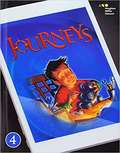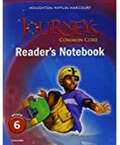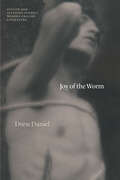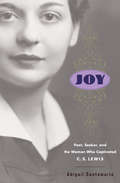- Table View
- List View
Journeys of Remembrance: Representations of Travel and Memory in Post-war French and German Literature
by Kathryn Jones"The Second World War was a common experience of cultural and historical rupture for many European countries, but studies of this period and its after-images often remain locked in national frameworks. Jones' comparative study of national memory cultures argues for a more nuanced view of responses to shared issues of remembrance. Focusing on the 1960s and 1970s, two decades of great change and debate in French and German discourses of memory, it investigates literary representations of the Second World War, and in particular the Holocaust, from France and both Germanies. The study encompasses thirteen works representing a variety of genres and divergent perspectives, and authors include Jorge Semprun, Peter Weiss, Georges Perec and Bernward Vesper. Addressing the underlying theme of travel as a means of exploring the past, it contrasts the journeys made by deportees and post-war visitors to the camps with the use of the journey as a literary device."
Journeys of the Mind: A Life in History
by Peter BrownA beautifully written personal account of the discovery of late antiquity by one of the world’s most influential and distinguished historiansThe end of the ancient world was long regarded by historians as a time of decadence, decline, and fall. In his career-long engagement with this era, the widely acclaimed and pathbreaking historian Peter Brown has shown, however, that the “neglected half-millennium” now known as late antiquity was in fact crucial to the development of modern Europe and the Middle East. In Journeys of the Mind, Brown recounts his life and work, describing his efforts to recapture the spirit of an age. As he and other scholars opened up the history of the classical world in its last centuries to the wider world of Eurasia and northern Africa, they discovered previously overlooked areas of religious and cultural creativity as well as foundational institution-building. A respect for diversity and outreach to the non-European world, relatively recent concerns in other fields, have been a matter of course for decades among the leading scholars of late antiquity.Documenting both his own intellectual development and the emergence of a new and influential field of study, Brown describes his childhood and education in Ireland, his university and academic training in England, and his extensive travels, particularly in the eastern Mediterranean and the Middle East. He discusses fruitful interactions with the work of scholars and colleagues that include the British anthropologist Mary Douglas and the French theorist Michel Foucault, and offers fascinating snapshots of such far-flung places as colonial Sudan, midcentury Oxford, and prerevolutionary Iran. With Journeys of the Mind, Brown offers an essential account of the “grand endeavor” to reimagine a decisive historical moment.
Journeys of the Slave Narrative in the Early Americas (New World Studies)
by Ian Finseth Nicole N. AljoeFocusing on slave narratives from the Atlantic world of the eighteenth and early nineteenth centuries, this interdisciplinary collection of essays suggests the importance--even the necessity--of looking beyond the iconic and ubiquitous works of Olaudah Equiano, Frederick Douglass, and Harriet Jacobs. In granting sustained critical attention to writers such as Briton Hammon, Omar Ibn Said, Juan Francisco Manzano, Nat Turner, and Venture Smith, among others, this book makes a crucial contribution not only to scholarship on the slave narrative but also to our understanding of early African American and Black Atlantic literature. The essays explore the social and cultural contexts, the aesthetic and rhetorical techniques, and the political and ideological features of these noncanonical texts. By concentrating on earlier slave narratives not only from the United States but from the Caribbean, South America, and Latin America as well, the volume highlights the inherent transnationality of the genre, illuminating its complex cultural origins and global circulation.
Journeys: Close Reader Grade 2 (Journeys Ser.)
by Houghton Mifflin Harcourt Staff*This textbook has been transcribed in UEB, formatted according to Braille textbook formats, proofread and corrected.
Journeys: Common Core Grade 6
by Houghton Mifflin HarcourtYou're about to set out on a reading journey that will take you from ancient Egypt to the modern world of robots. On the way, you'll learn amazing things as you become a better reader. Your reading journey begins with a story about a young girl who is writing a book of her own. Plenty of other reading adventures lie ahead.
Journeys: Grade 4
by Houghton Mifflin HarcourtJourneys Grade 4 is a comprehensive English language arts program. It provides an instructional system for reading both literature and informational texts, for acquiring foundational skills, and for developing mastery of speaking, listening and writing.
Journeys: Student Edition Grade 6 2017 (Journeys Ser.)
by Houghton Mifflin Harcourt StaffHardcover Houghton Mifflin Harcourt Journeys Level 6 student textbook.
Journeys: Student Edition, Volume 2 Grade 2, 2017 (Journeys)
by Irene FountasNIMAC-sourced textbook
Joy of the Worm: Suicide and Pleasure in Early Modern English Literature (Thinking Literature)
by Drew DanielConsulting an extensive archive of early modern literature, Joy of the Worm asserts that voluntary death in literature is not always a matter of tragedy. In this study, Drew Daniel identifies a surprisingly common aesthetic attitude that he calls “joy of the worm,” after Cleopatra’s embrace of the deadly asp in Shakespeare’s play—a pattern where voluntary death is imagined as an occasion for humor, mirth, ecstatic pleasure, even joy and celebration. Daniel draws both a historical and a conceptual distinction between “self-killing” and “suicide.” Standard intellectual histories of suicide in the early modern period have understandably emphasized attitudes of abhorrence, scorn, and severity toward voluntary death. Daniel reads an archive of literary scenes and passages, dating from 1534 to 1713, that complicate this picture. In their own distinct responses to the surrounding attitude of censure, writers including Shakespeare, Donne, Milton, and Addison imagine death not as sin or sickness, but instead as a heroic gift, sexual release, elemental return, amorous fusion, or political self-rescue. “Joy of the worm” emerges here as an aesthetic mode that shades into schadenfreude, sadistic cruelty, and deliberate “trolling,” but can also underwrite powerful feelings of belonging, devotion, and love.
Joy of the Worm: Suicide and Pleasure in Early Modern English Literature (Thinking Literature)
by Drew DanielConsulting an extensive archive of early modern literature, Joy of the Worm asserts that voluntary death in literature is not always a matter of tragedy. In this study, Drew Daniel identifies a surprisingly common aesthetic attitude that he calls “joy of the worm,” after Cleopatra’s embrace of the deadly asp in Shakespeare’s play—a pattern where voluntary death is imagined as an occasion for humor, mirth, ecstatic pleasure, even joy and celebration. Daniel draws both a historical and a conceptual distinction between “self-killing” and “suicide.” Standard intellectual histories of suicide in the early modern period have understandably emphasized attitudes of abhorrence, scorn, and severity toward voluntary death. Daniel reads an archive of literary scenes and passages, dating from 1534 to 1713, that complicate this picture. In their own distinct responses to the surrounding attitude of censure, writers including Shakespeare, Donne, Milton, and Addison imagine death not as sin or sickness, but instead as a heroic gift, sexual release, elemental return, amorous fusion, or political self-rescue. “Joy of the worm” emerges here as an aesthetic mode that shades into schadenfreude, sadistic cruelty, and deliberate “trolling,” but can also underwrite powerful feelings of belonging, devotion, and love.
Joy of the Worm: Suicide and Pleasure in Early Modern English Literature (Thinking Literature)
by Drew DanielConsulting an extensive archive of early modern literature, Joy of the Worm asserts that voluntary death in literature is not always a matter of tragedy. In this study, Drew Daniel identifies a surprisingly common aesthetic attitude that he calls “joy of the worm,” after Cleopatra’s embrace of the deadly asp in Shakespeare’s play—a pattern where voluntary death is imagined as an occasion for humor, mirth, ecstatic pleasure, even joy and celebration. Daniel draws both a historical and a conceptual distinction between “self-killing” and “suicide.” Standard intellectual histories of suicide in the early modern period have understandably emphasized attitudes of abhorrence, scorn, and severity toward voluntary death. Daniel reads an archive of literary scenes and passages, dating from 1534 to 1713, that complicate this picture. In their own distinct responses to the surrounding attitude of censure, writers including Shakespeare, Donne, Milton, and Addison imagine death not as sin or sickness, but instead as a heroic gift, sexual release, elemental return, amorous fusion, or political self-rescue. “Joy of the worm” emerges here as an aesthetic mode that shades into schadenfreude, sadistic cruelty, and deliberate “trolling,” but can also underwrite powerful feelings of belonging, devotion, and love.
Joy: Poet, Seeker, and the Woman Who Captivated C. S. Lewis
by Abigail Santamaria&“A lush Narnia tale for grownups&”: The first comprehensive biography of the rebel thinker who married C. S. Lewis (Megan Marshall, Pulitzer Prize winner). If Joy Davidman is known at all, it&’s as the wife of C. S. Lewis, author of The Chronicles of Narnia. On her own, she was a poet and radical, a contributor to the communist journal New Masses, and an active member of New York literary circles of the 1930s and &’40s. Growing up in a family of Jewish immigrants in the Bronx, she became an atheist, then a practitioner of Dianetics, and finally a Christian convert after experiencing a moment of transcendent grace. She was also a mother, a novelist, a screenwriter, and an intelligent, difficult, and determined woman. In 1952 she set off for England to pursue C. S. Lewis, the man she considered her spiritual guide and her intellectual mentor. Out of a deep friendship grounded in faith, poetry, and a passion for writing grew a timeless love story, and an unforgettable marriage of equals—one that would be immortalized in the film Shadowlands and Lewis&’s memoir, A Grief Observed. &“Plumbing the depths of unpublished documents, Santamaria reveals the vision and writing of a young woman whose coming of age in the turbulent thirties is both distinctive and emblematic of her time&” (Susan Hertog, author of Anne Morrow Lindbergh: Her Life). Finally, Joy Davidman is brought out of her husband&’s shadow to secure a place in literary history that is both a long-time coming and well-deserved. &“This book gives Davidman her life back. . . . Ms. Santamaria succeeds in de-mythologizing Davidman&’s story.&” —The Wall Street Journal &“Compelling . . . clear, unsentimental.&” — The New York Times Book Review
Joyce & Betrayal
by James Alexander FraserThis book offers a fundamental and comprehensive re-evaluation of one of Joyce's most pervasive themes. By showing that betrayal was central to how Joyce understood and depicted the difficulties and terrors at the heart of all relationships, this book re-conceives Joyce's approach to history, politics, and the other. Leaving behind the pathologizing discourses by which Joyce's interest in betrayal has been treated as an 'obsession,' this book offers a vision of Joyce as both dramatist and theorist of betrayal. It demonstrates that, rather than being compelled by some unconscious urge to produce and reproduce textual betrayals, Joyce had a deep and hard-won conception of the specific dramatic energies wrapped up in the language and structures of betrayal and repeatedly found ways to make use of this understanding in his work.
Joyce / Foucault
by Wolfgang StreitSheds new light on James Joyce's use of sexual motifs as cultural raw material for Ulysses and other works Joyce/Foucault: Sexual Confessions examines instances of sexual confession in works of James Joyce, with a special emphasis on Portrait of the Artist as a Young Man and Ulysses. Using Michel Foucault's historical analysis of Western sexuality as its theoretical underpinning, the book foregrounds the role of the Jesuit order in the spread of a confessional force, and finds this influence inscribed into Joyce's major texts. Wolfgang Streit goes on to argue that the tension between the texts' erotic passages and Joyce's criticism of even his own sexual writing energizes Joyce's narratives-and enables Joyce to develop the radical skepticism of power revealed in his work.
